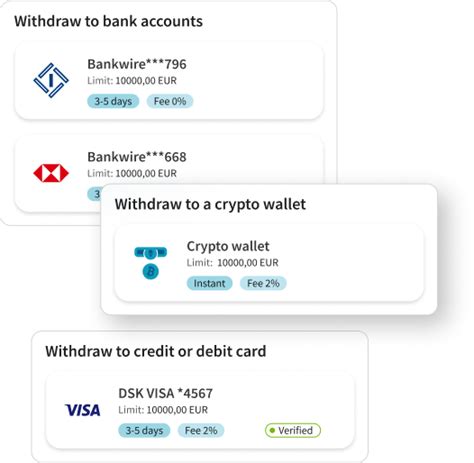Crypto withdrawals: Top Tips for Keeping Your Transactions Private
In the world of cryptocurrency, security and privacy are top priorities. With Millions of Users Around the Globe, the Risk of Hacking and Data Breaches is ever-present. However, there are steps you can take to protect your cryptocurrency transactions from Unwanted Attention.
In this article, we will explore the best practices for Keeping your crypto withdrawals private, including how to use two factor authentication (2FA), generate strong passwords, and more.
Why Private Transactions Matter
Private Transactions in Cryptocurrencies Are Essential for Maintaining your Financial Security. When you send funds, your wallet is essential creating a digital record of the transaction on the blockchain. If your address or wallet information falls into the wrong hands, it could be used to steal your coins.
To protect yourself from this risk, you need to keep your transactions private. Here are some top tips for Mintining Confidentiality:

1. Use Two-Factor Authentication (2FA)
Two factor Authentication is A Security Process That Requires Both of Your Unique Passwords and A Second Form of Verification, Such as a Code Sent via SMS or An Authenticator App. This adds an Extra Layer of Protection to Your Wallet, Making It Much Harder For Hackers to Access Your Funds.
To set up 2fa on your cryptocurrency wallet, follow thesis steps:
- Download the wallet app
- Go to the Settings Menu and Enable 2FA
- Create a new account or use an existing one
- Set up an Authentication Method of Your Choice (E.G. SMS, Authenticator app)
2. Generate Strong Passwords
Your password is the most vulnerable aspect of your cryptocurrency wallet. To protect yourself from unauthorized access, it’s essential to generate strong passwords.
- Use A Combination of Uppercase and LowerCase Letters
- Include Numbers and Special Characters
- Avoid Using Easily Guessable Information (E.G. Names, Birth Dates)
- Change your password Regularly
3. Keep your wallet information confidential
Never share your wallet address or other sensitive information with anyone, even if you trust them.
- Use A Secure Method of Sharing Your Wallet Address (E.G. A Private Message or Email)
- Never send your wallet address to spam emails or messaging platforms
- Keep your wallet information private and confidential
4. Monitor your activity
Regularly monitor your cryptocurrency activity to detect any suspicious transactions or potential hacking attempts.
- Use the build in transaction tracking feature on your wallet app
- Set Up Notifications for Unusual Activity (E.G. Large Transactions, Repeated Login Attempts)
- Regularly Review Your Account Statements and Transaction History
5. Store your cryptocurrency in A Secure Location
When failure your cryptocurrency, use a secure location to protect it from hacking and theft.
- Use a hardware wallet or cold storage solution (e.g. ledger, trezor) for high-risk investments
- Consider Using A Software Wallet That Has Built-In Security Features (E.G. 2FA, Encryption)
- Keep Your Private Keys Safe and Secure
6. Be Cautious of Phishing Scams
Phishing scams are designed to trick you into revealing sensitive information or gaining access to your cryptocurrency account.
- Never respond to Suspicious emails or messages
- Don’t click on Links or Download Attachments from Unknown Sources
- Use a reputable wallet app that has built-in security features (e.g. 2fa, encryption)
7. Consider using a blockchain-enabled wallet
Some cryptocurrency wallets have build-in blockchain-enabled features that provide an extra layer of security and protection.
- Consider Using a Wallet with Advanced Security Features (E.G.
